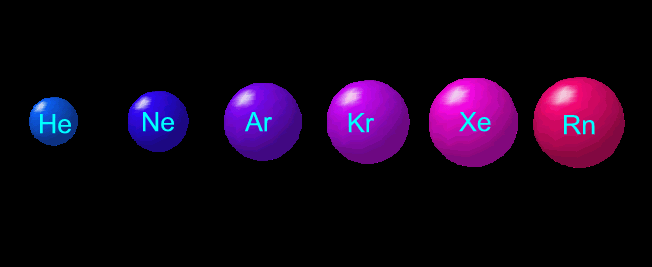|
|
Molecules
|
|
|
This page discusses the molecular origin of the the three factors
that determine gas conductivity. We gain theoretical insight on how to
reduce the conduction of heat from a diver if we consider that KGAS increases with the specific heat CV
, and decreases with increasing mass m, and cross section s. Molecular Specific Heat CVThe amount of energy that can be carried away from a warm diver by a specific type of molecule is quantified by the specific heat CV. It is just a number that is related to the molecular structure, and remains constant for the range of diving temperatures. Throughout this discussion, I refer to the specific heat per molecule. When you consult tables of specific heats, be careful to note which units of measurement were used. For instance, if the specific heats are quoted as "per kilogram," then the fundamental nature of CV is masked by a factor of density. Complex molecules, built from multiple atoms, can store heat energy more effectively than simple molecules because their increased degrees of mechanical freedom allow multiple rotational and vibrational modes, which add to CV. Because gas conductivity KGAS is proportional to CV, we should look for simple gases with the smallest specific heat. The simplest gas molecules are single atoms: helium (He), neon (Ne), argon (Ar), krypton (Kr), xenon (Xe), and radon (Rn). They all share the same specific heat due to their identical structures. Furthermore, because of their spherical symmetry, the specific heat of the monatomic gases is the smallest possible. Single atoms have no way to vibrate or rotate, so they can only carry energy by moving. The next most complex molecules are diatomic. They are made of two atoms in molecules such as hydrogen (H2), nitrogen (N2) and oxygen (O2), which have the same specific heat, about 5/3 times greater than the value for the monatomic gases. The larger value of CV arises from the ability of the diatomic molecules to store energy by tumbling around their axes in addition to the energy they carry due to translational motion (vibration is not a viable energy storage mechanism for these molecules at diving temperatures). More complex polyatomic molecules, such as carbon dioxide (CO2) and sulfur hexafluoride (SF6 ) have specific heats two or more times greater than the monatomic gases due to their complex geometries. Therefore, we prefer a monatomic gas for use as an
insulator because of its relative inability to carry heat away from the diver
due to its small CV. Molecular Mass m and Cross Section sThe specific heat of a gas is only one of the factors that influence its thermal conductivity. Both the mass and the cross-sectional size of the gas molecules reduce KGAS as they get larger, which sways the argument in favor of large molecules. Note that KGAS only depends on the square root of the mass m, which reduces the effectiveness of this factor in determining conductivity. The form of the mass dependence arises from the molecular velocities, which aid the transfer of heat as they increase. The low velocities of massive molecules reduce the rate at which heat is transferred by collisions, so we should look for massive molecules to reduce KGAS. The size of gas molecules s also influences the thermal conductivity by affecting the molecular collision rate. Larger molecules provide bigger targets to one another, and the likelihood of a collision increases, impeding the flow of heat away from the diver. So, this is why we are looking for a suit inflation gas of large, massive, and simple molecules.
|
Monatomic Gases: Helium, Neon, Argon, Krypton, Xenon, Radon
Single atom, or monatomic, gases have the smallest Specific Heat CV.
|
|
|
Diatomic Gases: Oxygen, Nitrogen, Hydrogen |
||
Two atom, or diatomic, gases O2
and N2 are the principle components of air. Translational motion parallel to the
x y and z axes are the lowest energy excitations for hot molecules. Click the cartoon of an Oxygen
molecule to view a clip of the x component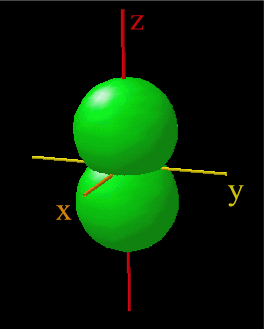 of motion.
of motion.
In addition to translation, diatomics can store energy by rotating
around either the symmetric
x axis or
|
||
|
Complex
Molecules: Water, Freon, Sulfur Hexafluoride |
||
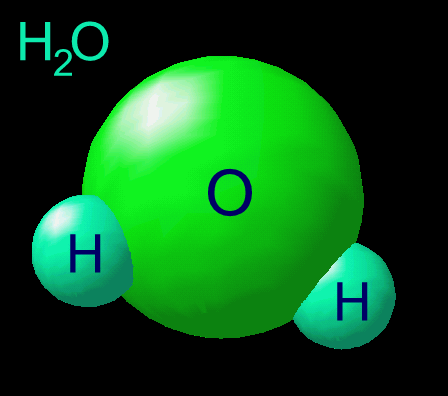 Water vapor from perspiration dilutes suit insulation gas, and increases undergarment conductivity by condensation onto the fabric. |
||
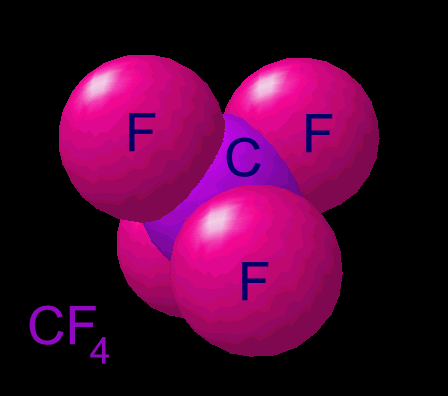 Click the cartoon of
the Freon molecule
CF4 to view a clip of combined translational and rotational motion. Click the cartoon of
the Freon molecule
CF4 to view a clip of combined translational and rotational motion. |
||
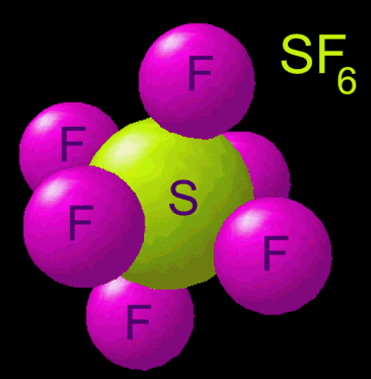 Click the sulfur hexafluoride SF6 cartoon to play a short
clip that shows combined rotation and vibration. At very large
temperatures (in flames), up to six modes of molecular energy storage
are added through rotation and vibration. Click the sulfur hexafluoride SF6 cartoon to play a short
clip that shows combined rotation and vibration. At very large
temperatures (in flames), up to six modes of molecular energy storage
are added through rotation and vibration. |
||
|
|
||

